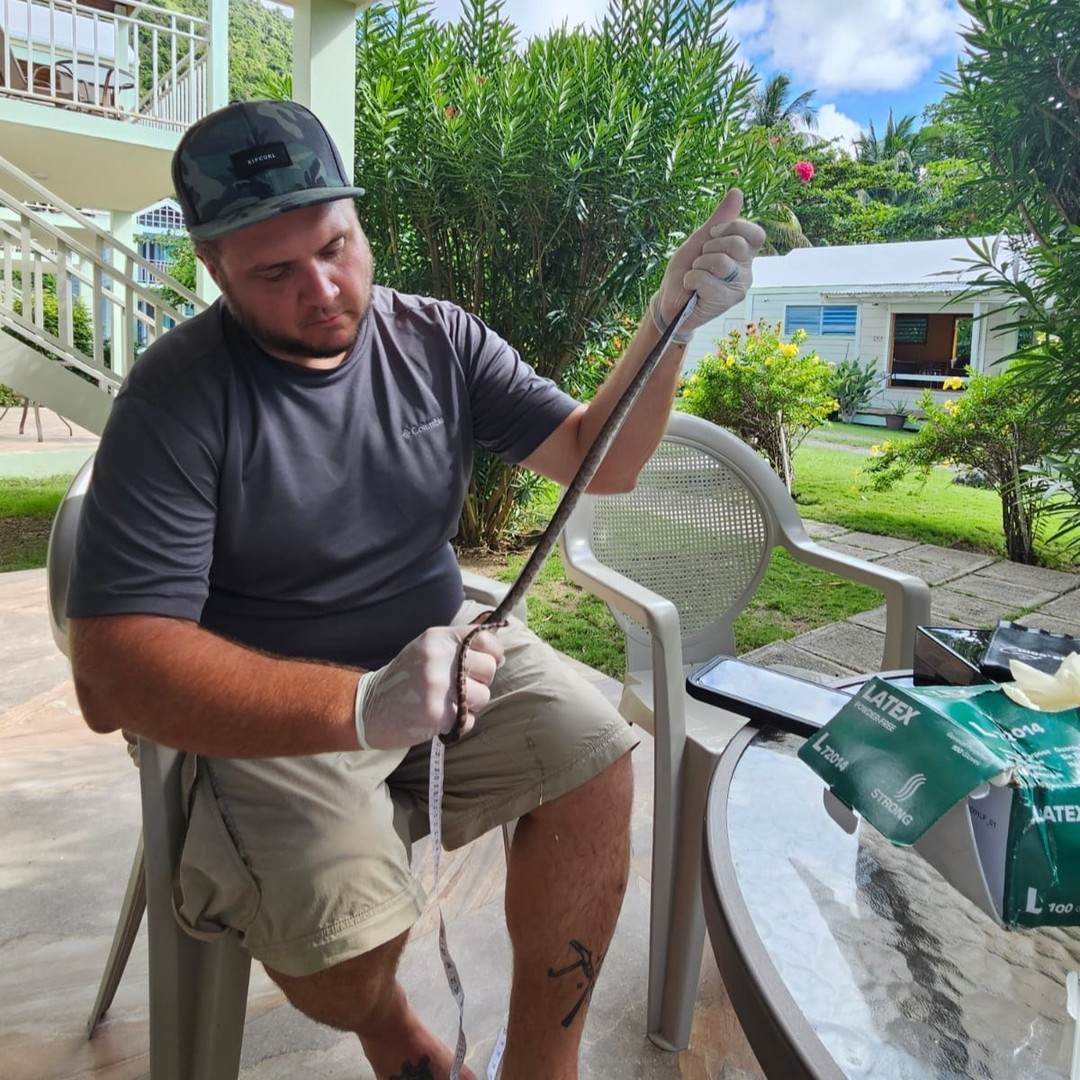- Field survey methods and challenges in tracking endangered snakes like the Virgin Island boa
- Conservation initiatives and their roles, including captive breeding and population monitoring
- Partnership and collaboration in wildlife conservation efforts across multiple organizations
- Importance of conservation efforts in protecting biodiversity and ecosystems
- Ethical considerations and best practices for herpetologists in the field
Surveying endangered snakes like the Virgin Island boa in the wild presents a unique combination of methodological challenges, safety considerations, and the thrill of contributing to conservation science. Justin Elden’s recent expedition to the British Virgin Islands exemplifies the necessary efforts to assess and safeguard one of the world’s rarest boa species.
Field herpetologists employ various survey methods to successfully track these elusive nocturnal creatures. These techniques might include visual encounter surveys, pitfall traps, camera traps, and radio telemetry. Researchers often navigate difficult terrain under the darkness to detect these snakes, as nightfall provides the optimal time for these animals to be most active.
Despite their historical portrayal in popular culture, finding an endangered snake like the Virgin Island boa can feel like searching for a needle in a vast haystack. The biologists must be knowledgeable about the snake’s preferred habitat, behavior, and any distinctive signs, such as skin shedding, that might guide them to their subject. Once located, the individual boas are carefully captured to record vital data, including the length, weight, and health status. This information forms a larger dataset to help scientists understand population dynamics, growth rates, and survival.
Turning to collaborative conservation initiatives, the Virgin Island Boa Recovery Program stands as a beacon of hope for this species. The initiative links the efforts of zoos, academic institutions, and government agencies to protect and study the boa. The Saint Louis Zoo‘s commitment to raising a stable population in their specialized lab underscores how captive breeding programs serve as a genetic reservoir and an educational platform for broader conservation awareness.
The synergy of conservation partnerships cannot be overstated. The work of the U.S. Fish and Wildlife Service, the Virgin Islands Department of Planning & Natural Resources, and several other stakeholders reflects a harmonious effort to ensure the survival of the Virgin Island boa. These organizations coordinate their work to share findings, strategies, and resources to maximize the effectiveness of their conservation actions.
Biodiversity and ecosystem health are inseparable. By conserving an endangered species like the Virgin Island boa, we help maintain the ecological balances critical to the well-being of many other species within the same environment. Such endeavors highlight how species conservation is vital not only for the creatures themselves but also for preserving the integrity of entire ecological networks on which humans depend.
Lastly, ethical considerations are at the forefront of herpetologists’ minds when handling wild animals. Researchers must adhere to stringent protocols designed to minimize distress and injury to snakes during surveys. Gathering scientific data on endangered species like the Virgin Island boa must be done with respect for the animal’s well-being, further emphasizing the importance of training and experience in herpetology.
The dedication exhibited by professionals like Justin Elden and the multifaceted approach of the Virgin Island Boa Recovery Program serve as exemplary models for wildlife conservation. Their efforts urgently remind us of our collective responsibility to safeguard the delicate threads of life that bind Earth’s biodiversity together.
*****
Source Description
What’s it like to survey endangered snakes in the wild?
Recently, Justin Elden, Curator of Herpetology and Aquatics at the Zoo, traveled to the British Virgin Islands for field work aimed at understanding the Virgin Island boa, one of the smallest and rarest boa species in the world.
This non-venomous species can be found only in Puerto Rico, the U.S. Virgin Islands and the British Virgin Islands where they face significant population decline.
Elden ventured out onto islands to survey these nocturnal snakes as part of the Virgin Island Boa Recovery Program, a conservation effort led by our friends at the North Carolina Zoo. When the survey team found and carefully captured a snake, they recorded information on the snake to compare to other individuals in the population.
Meanwhile, partners in the program, including the Saint Louis Zoo, are working to raise a sustainable population of Virgin Island boas in human care with the goal of one day releasing zoo-raised members of the species into the wild.
The Saint Louis Zoo keeps Virgin Island boas in a small, designated lab in the Charles H. Hoessle Herpetarium.
The Virgin Island Boa Recovery Program is a partnership between organizations including the North Carolina Zoo, U.S. Fish and Wildlife Service, the Virgin Islands Department of Planning & Natural Resources, Fort Worth Zoo, British Virgin Islands Ministry of Environment, Natural Resources & Climate Change and the University of North Carolina Asheville.


